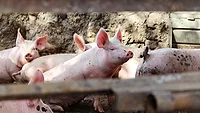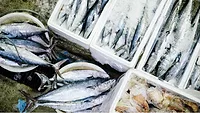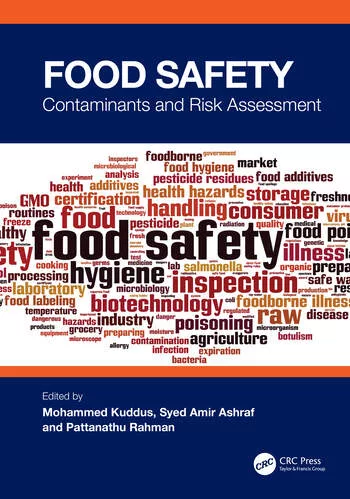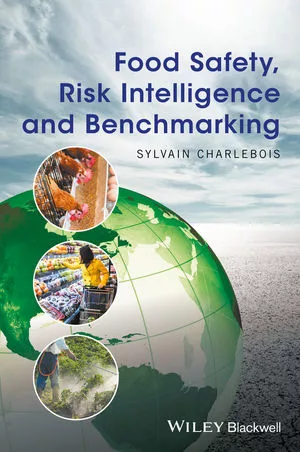First Study to Map Edible Insect Supply Chain Identifies Risk Areas for Contamination, Food Fraud

Image credit: Ollo/E+ via Getty Images
A recent study has mapped the edible insect supply chain to identify the main points for potential food safety hazards and food fraud.
The researchers highlighted feed substrate as a key area of concern for microbiological and chemical food safety, as well as novel processing techniques being particularly at risk to food fraud in the future. Overall, the study found substantial food safety and authenticity gaps that need to be addressed before edible insects can be considered safe and sustainable protein sources for Western markets.
Although the consumption of insects currently takes place in over 120 countries, the majority in Asia and Africa, interest in insects as a protein source has only recently begun to develop in Western nations as a possible sustainable food source. At present, the environmental sustainability of large-scale insect farming including rearing, harvesting, and production is largely unknown. Additionally, studies have reported challenges to scaling-up insect production systems, with many existing knowledge gaps preventing the emergence of edible insects in Western countries, such as consumer barriers, restrictive novel food legislation, concerns with emerging food allergies, the safety of insect processing techniques, and possible fraudulent supply chains.
To address existing knowledge gaps about mass-produced edible insect sustainability and safety, the researchers mapped out the insect supply chain, based on available literature, food fraud data, and online interviews with key players in the EU edible insect industry.
At present, among over 2,000 known edible insect species, only four (yellow mealworm, migratory locust, lesser mealworm, and house cricket) are approved for use in specific food products by certain producers in the EU. Another eight novel food applications for edible insects are awaiting approval in the EU.
The supply chain and trading channels of insects depend on their geographic origin and country of intended consumption. In Asian countries, such as Thailand, the insect supply chain is generally short with a small-scale distribution as they are minimally processed or packaged. However, the edible insect supply chain in EU is more complex, given the need for processing into other food products due to lingering consumerism barriers. Of the 500 tons of insect-based foods produced by EU businesses in 2019, approximately 75 percent was in the form of powdered insect ingredients; although this processing may make edible insects more palatable to Western consumers, it also may expose EU insect products and snacks to fraudulent activity along the supply chain. Additionally, a reported 65 percent of EU edible insect companies import whole insects from Asian countries to process and retail in the EU, while only 12 out of 59 EU insect companies produce their own raw materials.
Microbial and Chemical Contamination of Edible Insects
Looking for quick answers on food safety topics?
Try Ask FSM, our new smart AI search tool.
Ask FSM →
In general, the EU edible insect supply chain follows that of a traditional food commodity, including rearing, harvesting, and processing. A point of food safety concern along the edible insect supply chain resides in feed substrates, which can be sources of microbiological and chemical hazards, such as bacteria, viruses, heavy metals, mycotoxins, and prions. Although the environmental benefits of insects as food are based on the ability of insects to be reared using a range of food waste streams as feed, there is concern for the safety of using food and feed waste as insect feed, as waste may contain foodborne pathogens and chemical hazards. Therefore, the use of waste stream feeds for edible insect production is currently prohibited in the EU.
Some research has been conducted into the viability of food waste streams—such as spent grains, beer yeast, potato peelings, waste plant tissues, and grocery store food waste—as feeds across a range of insect species. Some of these sources require additional processing to ensure their microbiological safety before being used as insect feeds, but few economic evaluations exist about the prospect. However, much investigation has been conducted into the bioaccumulation of heavy metals and other contaminants among edible insects through feed substrates. In general, these studies suggest that individual element uptake and bioaccumulation of harmful compounds in insects varies from species to species, including their ability to excrete heavy metals through fecal matter or inactivation through vesicle sequestration, calling for further research and revision into the EU’s maximum levels for toxic substances in insects. Long-term sustainable insect production in Western countries lies with specific legislation to guide the use of safe, economic, and high-quality waste streams as insect feed substrates.
The study highlights a risk assessment published in 2018 by the European Food Safety Authority (EFSA) that identifies high bacterial numbers within edible insect production and alarming food safety concerns. The EFSA risk assessment, along with other studies, suggest the main microbial threats include (but are not limited to) Salmonella and Enterobacteriaceae in the black soldier fly, Bacillus cereus in the black soldier fly, and yeasts and molds in the house cricket.
Additionally, the inclusion of a “crushing” step in edible insect processing has been shown to increase the total viable count (TVC) of bacteria in the lesser mealworm, possibly due to the release of bacteria-containing waste from insects upon crushing. Recognizing this possible hazard, some producers have implemented a 24–48 hour “fasting” step before crushing, although scientific studies have shown the inefficiency of this control step.
Allergen Concerns of Edible Insects
In addition to microbial and chemical threats, edible insects pose a threat as an allergen. Although very few direct reports of clinical incidents or research on how insect proteins may have led to anaphylaxis can be found currently, the similarity of tropomyosin epitopes (as one of the most commonly known allergens found in seafood) among arthropods means that humans who are allergic to shellfish/crustaceans and dust mites are likely to experience sensitization and subsequent allergic reactions if insect proteins are consumed.
Scientific studies investigating the risk from allergens and their detection have concluded that the potency of allergens found in differing insect proteins respond under different processing techniques. Further research into the allergenicity of specific insect proteins is required to determine the route of sensitization, the minor and major allergens associated with each of the four insect species approved as a novel food by the EU, and the effect of processing on the allergenicity of insect-based foods.
Opportunities for Food Fraud in Insect Protein Supply Chain
As a novel and largely under-researched food product, risk assessment into the vulnerability of insect products to economically motivated adulteration is almost nonexistent. The present study is the first, to the authors’ knowledge, that addresses potential fraud in the edible insect food supply chain. However, the study provides a case study involving a different food commodity/supply chain that could model possible food fraud in the edible insect industry—the Melamine Scandal.
In the 2008 Melamine Scandal in China, dairy products and infant formula were adulterated with melamine to boost their nitrogen content, giving the illusion of higher protein content and therefore higher value. This nitrogen rich compound could not be distinguished from genuine milk proteins using the industry standard methods of analysis. Melamine, used in the production of industrial glues and plastics, was and is not approved for use in foods and feeds due to its toxicity, and its adulteration of milk products resulted in the death of six infants and over 300,000 illnesses.
The Melamine Scandal is relevant as a case study for possible fraud in the edible insect supply chain due to a similar vulnerability—the use of the Kjeldahl method of protein content measurement. EFSA’s risk assessment for the market approval of house cricket and yellow mealworm reported an “overestimated protein content” using the Kjeldahl method with a nitrogen to protein conversion factor of 6.25, and it was concluded that the inaccuracy of protein content was due to the detection of non-protein nitrogen from the exoskeleton of insects. This loophole in protein content analysis resulting from the body composition of ground insects presents an opportunity for fraud.
Additionally, the projected rapid expansion of the edible insect sector, as well as existing insect proteins on the market being more expensive when compared to other protein sources, are other factors that put edible insects at greater risk of fraud. With a premium price among protein products coupled with an increasing consumer demand in Western countries, fraudsters may recognize this opportunity to exploit the emerging industry and profit through fraud.









